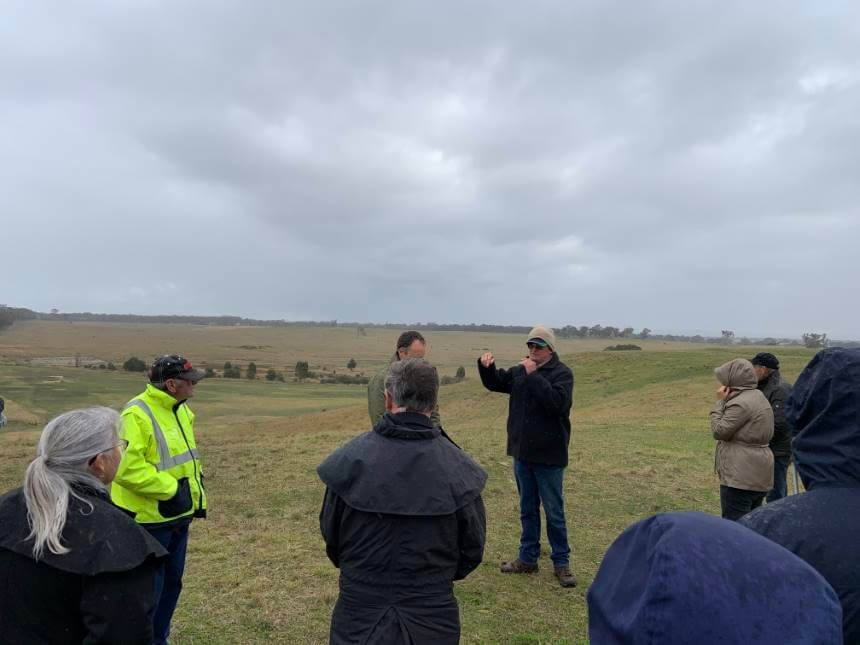East Gippsland’s battle with the ever-spreading African lovegrass (ALG) was charged with information last week, aiming to spread awareness and methods to get on top of it.
Three experts presented and there were two farm visits, one to the Beasley’s property near Lindenow South and the other at David and Ruth Read and Jen Ribolli’s property on the Lindenow South-Meerlieu Road.
Fortunate to get the forum to happen the day before lockdown, about 70 people attended, hearing from Neil Moss, Luke Pope and Declan McDonald.
Local agricultural consultant and forum co-organiser, Alison Gunn, says of ALG “it’s no ordinary weed”.
“You can’t just spray it and think it will go away,” Ms Gunn said.
“If you put in a lot of effort to get rid of it then ignore it, it’ll come back.
“You need diligent vigilance because it has thousands of seeds.”
At the Beasley’s property visit, Shaun Beasley spoke of his battle with the weed of more than 30 years.
”Lovegrass is one of the major challenges for us,” Mr Beasley said.
The Beasleys have two creeks running through their property, Tom’s Creek and Emu Creek, and both are infested with lovegrass.
For the Beasleys, the battle is to keep it out of perennial pastures.
Mr Beasley has used both glyphosate and Taskforce™, and discovered that the label rate Taskforce can sterilise the soil for a prolonged period of time.
His current strategy is to plant a winter cereal or annual ryegrass crop for two to three years, and spray with glyphosate prior to planting to kill any ALG.
He then plants a perennial mix in May, direct drilling after a glyphosate spray. His pasture mix includes cocksfoot, perennial ryegrass, kikuyu and sub clovers.
Once perennial pastures are established ongoing vigilance is essential and involves continual monitoring and spot spraying.
The fight against ALG comes with a significant cost to the business, with one labour unit working on ALG for at least six months of the year and replanting pastures more frequently, as well as spot spraying.
Mr Beasley has used kikuyu extensively to try and outcompete ALG, and currently plants a 15-metre strip of kikuyu around the edge of any paddocks adjacent to a boundary where lovegrass is a risk.
This includes creeks, roadsides and neighbours.
The kikuyu boundaries are created by planting runners taken from an existing kikuyu paddock.
A rotary hoe is run over an existing kikuyu patch, and clods and runners are put in a silage cart. The area to be planted is rotary hoed, and the silage cart is then towed over this area throwing out the runners and clods.
The cart is followed by the rotary hoe and roller to push the runners into the ground.
Fertility is an important part of ensuring the desired perennials can compete against any ALG. Mr Beasley soil tests every paddock every two to three years and has an ongoing fertiliser program to address soil acidity and soil nutrients, particularly phosphorus and potassium. He aims to have his Olsen P above 15mg/kg.
IMAGE: Shaun Beasley addresses a group of producers about combating African lovegrass on his property in wintery conditions last Thursday. (PS)
No ordinary weed


